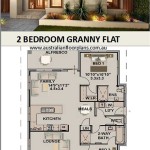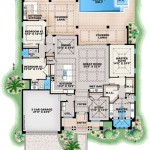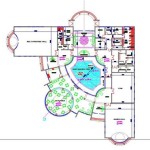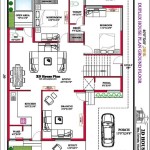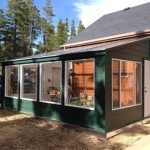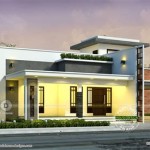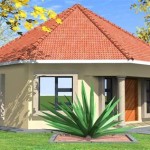Plan House Design Modern: Principles and Considerations
Modern house design, often characterized by clean lines, minimalist aesthetics, and functional spaces, represents a significant departure from traditional architectural styles. This approach prioritizes efficiency, sustainability, and a seamless integration with the surrounding environment. While the term "modern" can encompass a broad range of styles, certain core principles consistently define this design philosophy.
A plan for a modern house design requires careful consideration of various factors, including site conditions, material selection, spatial arrangement, and the integration of technology. Understanding these elements is crucial for creating a dwelling that is both aesthetically pleasing and practically suitable for the occupants' needs. The following key points delve into essential aspects of modern house design, providing insights into the planning process and the rationale behind specific design choices.
Functional Minimalism and Spatial Optimization
At the heart of modern house design lies the principle of functional minimalism. This concept emphasizes the elimination of unnecessary ornamentation and the focus on essential elements. The goal is to create spaces that are uncluttered, efficient, and easy to maintain. This is achieved through a deliberate reduction in decorative features and a prioritization of practical functionality.
Spatial optimization is equally crucial. Modern house plans often feature open floor plans that promote a sense of spaciousness and facilitate natural light diffusion. The arrangement of rooms is carefully considered to maximize usability and minimize wasted space. Kitchens frequently flow seamlessly into living areas, creating a central gathering space for family and guests. Bedrooms are designed as tranquil retreats, often incorporating features such as walk-in closets and en-suite bathrooms. The design should consider the flow of movement between spaces and how different areas of the house can be used simultaneously.
Storage solutions are integrated into the design to maintain the minimalist aesthetic. Built-in cabinets, concealed storage compartments, and strategically placed shelving units help to declutter the living spaces and create a sense of order. The use of multi-functional furniture is also common, allowing for flexibility and adaptability within the home. For instance, a sofa bed can serve as both a seating area and a guest bed, maximizing the utility of the space.
Natural light is a paramount consideration in modern design, often achieved through the strategic placement of large windows and skylights. These elements not only illuminate the interior spaces but also connect the occupants with the outdoors. The orientation of the house is often optimized to maximize solar gain during the winter months and minimize heat exposure during the summer. This helps to reduce energy consumption and create a more comfortable living environment.
The selection of materials plays a critical role in achieving the desired minimalist aesthetic. Common materials include concrete, steel, glass, and wood. These materials are often used in their raw or natural state, showcasing their inherent textures and qualities. The use of color is typically restrained, with a focus on neutral tones such as white, grey, and beige. These colors create a sense of calm and spaciousness, allowing the architectural features to take center stage. Accent colors can be incorporated sparingly to add visual interest and personality to the design.
In contrast to traditional design with separate rooms for each purpose, modern design favors versatile, multi-purpose spaces. A single room might serve as a living area, dining room, and home office, allowing occupants to adapt the space to their changing needs. This flexibility is particularly valuable in smaller homes, where maximizing the use of available space is essential.
Sustainability and Energy Efficiency
Sustainability is a core tenet of modern house design. This encompasses a range of strategies aimed at minimizing the environmental impact of the building, reducing energy consumption, and promoting the health and well-being of the occupants. Integrating sustainable design principles from the outset of the planning process is key to creating a truly eco-friendly home.
Passive solar design is a fundamental aspect of sustainable building. This involves orienting the house to maximize solar gain during the winter months and minimize solar heat gain during the summer. Overhangs, awnings, and strategically placed trees can provide shade during the hottest parts of the day, reducing the need for air conditioning. Proper insulation is also essential for maintaining a comfortable indoor temperature and reducing energy consumption. High-performance windows and doors can further minimize heat loss and gain.
Renewable energy sources, such as solar panels and wind turbines, are increasingly incorporated into modern house designs. These systems can generate electricity and heat for the home, reducing reliance on fossil fuels. Solar water heaters can provide hot water for domestic use, further reducing energy consumption. The integration of these technologies requires careful planning and coordination with the overall design of the house.
Water conservation is another important aspect of sustainable design. Low-flow toilets, showerheads, and faucets can significantly reduce water consumption. Rainwater harvesting systems can collect rainwater for use in irrigation and toilet flushing. Drought-resistant landscaping can further reduce the need for irrigation, conserving water resources.
The selection of sustainable building materials is also crucial. Recycled materials, such as recycled concrete and steel, can reduce the environmental impact of the building process. Locally sourced materials can minimize transportation costs and support local economies. Low-VOC paints and finishes can improve indoor air quality, promoting the health and well-being of the occupants. Consideration should be given to the entire lifecycle of the building materials, from their production to their eventual disposal.
Landscaping plays a vital role in creating a sustainable and energy-efficient home. Planting trees and shrubs can provide shade, reduce heat gain, and improve air quality. Native plants require less water and maintenance than non-native species, reducing the environmental impact of landscaping. Permeable paving materials can allow rainwater to infiltrate the ground, reducing stormwater runoff and replenishing groundwater supplies.
Smart home technology can also contribute to sustainability and energy efficiency. Smart thermostats can automatically adjust the temperature based on occupancy and weather conditions, reducing energy consumption. Smart lighting systems can automatically turn off lights when rooms are unoccupied. Energy monitoring systems can provide real-time data on energy consumption, allowing occupants to identify areas where they can save energy.
Integration with the Environment and Outdoor Living
Modern house design often emphasizes a strong connection between the interior and exterior spaces. This is achieved through the use of large windows, sliding glass doors, and outdoor living areas. The goal is to create a seamless transition between the indoor and outdoor environments, allowing occupants to enjoy the natural beauty of the surrounding landscape.
Outdoor living spaces, such as patios, decks, and porches, are an integral part of modern house design. These areas extend the living space of the home and provide opportunities for outdoor dining, relaxation, and entertainment. The design of outdoor living spaces should be carefully considered to ensure that they are both functional and aesthetically pleasing.
The use of natural materials, such as wood and stone, can help to create a sense of harmony between the house and the surrounding environment. These materials can be used for cladding, decking, and landscaping. The integration of natural elements, such as trees, plants, and water features, can further enhance the connection between the house and the landscape.
The orientation of the house is also important for maximizing the connection with the environment. The house should be oriented to take advantage of views, natural light, and prevailing winds. Large windows and sliding glass doors should be placed to frame views of the surrounding landscape. Outdoor living areas should be oriented to provide shade and protection from the elements.
Landscaping plays a crucial role in integrating the house with the environment. Native plants can be used to create a natural and sustainable landscape that blends seamlessly with the surrounding environment. Trees can provide shade, reduce heat gain, and improve air quality. Water features can create a sense of tranquility and attract wildlife.
The design of the roof can also contribute to the integration with the environment. Green roofs, which are covered with vegetation, can provide insulation, reduce stormwater runoff, and improve air quality. Roof gardens can provide additional outdoor living space and opportunities for gardening. Solar panels can be integrated into the roof design to generate renewable energy.
Privacy is also an important consideration when integrating the house with the environment. Strategically placed trees, shrubs, and fences can provide privacy from neighboring properties. The orientation of windows and outdoor living areas should be carefully considered to minimize views from adjacent buildings.
The overall goal is to create a house that is both a functional living space and a harmonious part of the surrounding environment. By carefully considering the principles of functional minimalism, sustainability, and integration with the environment, it is possible to create a modern house that is both beautiful and sustainable.

22 House Design With Floor Plans You Will Love Simple Architectural Two Story Beautiful

Top 5 Modern House Plans With Photos Floor Archid

Picture Of Modern Bungalow House With 3d Floor Plans And Firewall Design

Modern House Design Floor Plans And Designs

Modern Open Floor House Plans Blog Eplans Com

Contemporary House Plans Home Design Floor

Modern House Oz71 Narrow Plans Blueprints

Modern House Floor Plans Top 12 Features To Include

Modern Two Story House Design 4 Bedroom Floor Plan Nethouseplans

3 Bedroom House Plans Your Guide To Perfect Home Design

